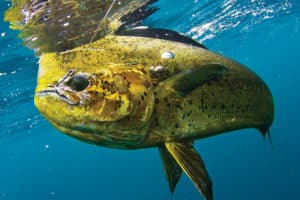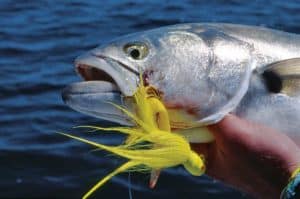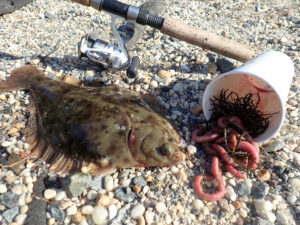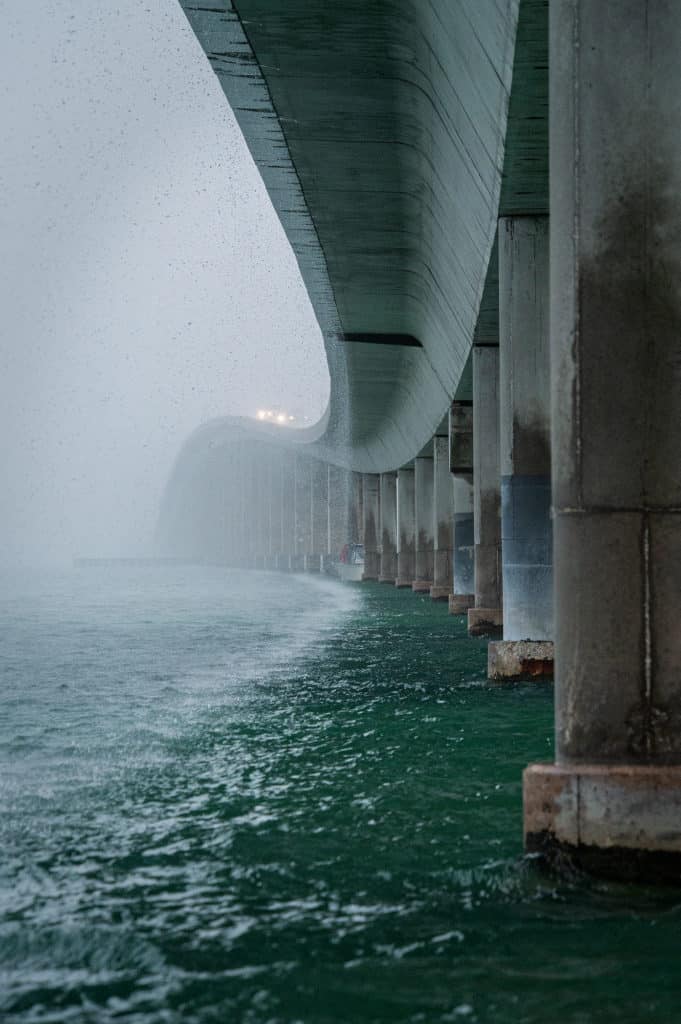
Many boaters view bridges as a hindrance. To navigate them, captains must slow to idle speed. On days with heavy boat traffic, getting through a bridge channel can take some time.
Savvy anglers, on the other hand, see bridges as great places to catch fish.
Depending on the type and size of a bridge and the body of water that it spans, the structure can offer varying current strengths and water depths, a variety of bottom profiles and an array of ambush spots for many different gamefish.
“What we have in Chesapeake Bay is basically a giant river,” says Capt. Tom Weaver (fishwithweaver.com) of Annapolis, Maryland, who often fishes the region’s infamous Bay Bridge, which connects western Maryland with the Eastern Shore. “So we’ve got this giant piece of structure in the middle of a river. It’s a magnet for the fish and the fishermen.”
Weaver primarily targets striped bass and white perch around the bridge, which consists of two separate 4.2-mile spans. He also fishes smaller bridges over rivers that flow into the bay.
Capt. Matt Williams (missjudy-charters.com) targets stripers, trout, redfish and sheepshead around bridges over the Savannah River in Georgia. And Capt. Glyn Austin (goingcoastalcharters.com) of Palm Bay, Florida, says bridges over and around the Indian River are great places to catch big snook, seatrout, redfish and tarpon.
Current Conditions
Experts consider the strength and direction of the tide to determine where and how they fish a bridge. Some bridges provide many options while others offer only a limited number of fishing spots.
“The No. 1 thing for fishing our bridge is having moving water,” Weaver says. “Whether the tide is incoming or outgoing doesn’t matter. You have to have current moving one way or the other. If I don’t like the current at one side of the bridge, I’ll go to the other side.”
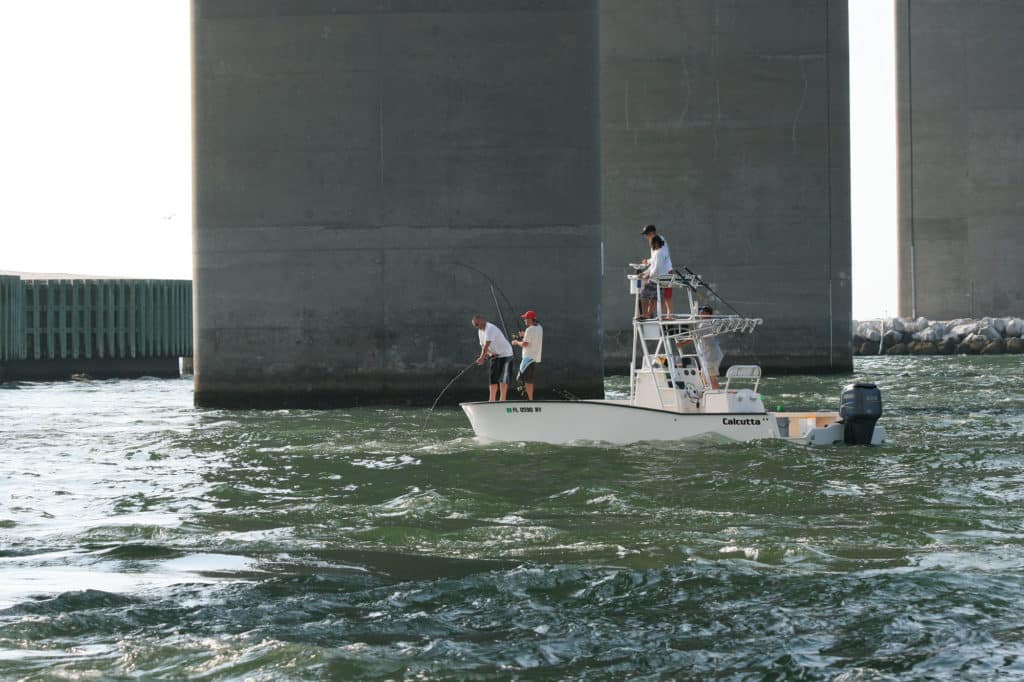
Austin fishes bridges from Fort Pierce to Melbourne, especially when strong winds make nearby inlets too rough to fish. He prefers to fish bridges on an incoming tide, although he’s had trips where both tides proved productive.
“If there’s not much current, we’ll anchor up right at the fenders and pitch baits and let them drift down-current of the fender,” he says. “I always use live bait during the daytime. Sometimes it might be pinfish, pilchards, pigfish, croakers, greenies (threadfin herring), whatever’s available.”
Piling It On
A light-tackle guide who fishes soft plastics on jigheads, Weaver might spend an hour fishing a particular bridge piling for rockfish, but sometimes his clients make only two casts before he’s moving to the next piling.
“I’ll just continuously work a piling if I can see them, or I’ve caught them there recently,” he says. “If you hook one, other fish will follow that fish up, which sometimes fires them up.”
Weaver likes to fish the Bay Bridge pilings “like a trout stream.” He positions his 23-foot C-Hawk close to a piling down-current of the bridge and has his anglers cast Bass Kandy Delight jigheads ranging from ⅜ to 1½ ounces with plastic tails of 4 to 10 inches up past the pilings as far as possible. Water depths range from 6 feet at the edges of the bridge to 60 feet in the middle. As the lures sink, anglers must keep tension on their lines so that they can feel stripers bite as the lures drift through the bridge along the bottom.
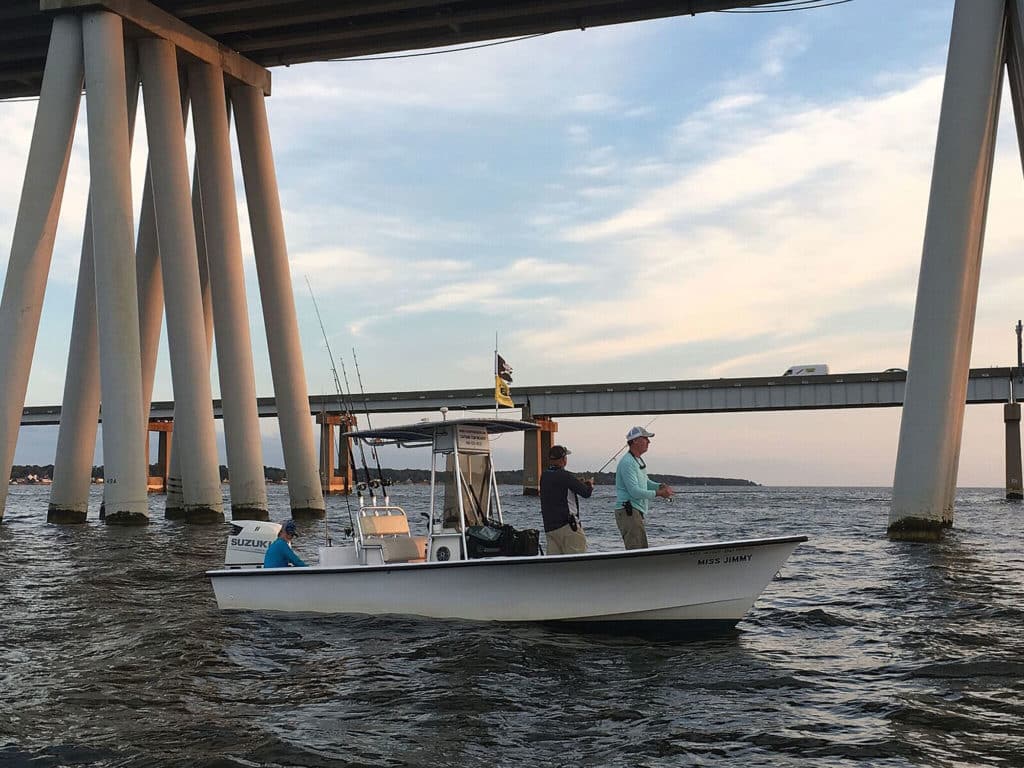
Williams uses live mullet, shrimp, herring and menhaden when fishing bridges in Savannah. He says he’s had the most success anchoring his 22-foot bay boat 60 feet up-current of a bridge and drifting a bait down to the pilings he wants to target.
He uses a Comal slip float that lets him adjust the depth of the bait. “Sometimes you want it on the bottom, and sometimes you want it suspended,” he explains, adding that a bigger float is easier to see and can suspend a heavier bait.
Austin typically fishes both sides of the main bridge channel fenders. He uses his Minn Kota i-Pilot trolling motor to hold his 23-foot Shoalwater Cat along the fenders, both inside and outside the channel.
“You’ve just got to figure out where the fish are sitting,” he says. “Sometimes they’re right inside the fenders. And they’re always moving in and out. When a school leaves, you might have to move from the southeast corner of the fender to the southwest corner.”
Tackling Bridge Fish
Heavy tackle often is required to avoid breakoffs on pilings and scattered debris. Austin uses an 8-foot Shimano Teramar rod with a Shimano Saragosa 10000 spinning reel spooled with 40-pound Sufix 832 braid and a 50-pound Sufix fluoro-carbon leader. Depending on the size of the bait, he uses a 6/0 or 7/0 7385 VMC Tournament circle hook. To get the bait down, he pinches a quarter-ounce split shot onto the 3- to 4-foot leader.
“Those fish, when they hit, they’re heading straight for the piling. That’s why I use the same rod I use for tarpon,” he says. “Depending on the bridge, we’ve caught goliath grouper to 20 pounds, big jacks, tarpon, grouper, trout, and mangrove snapper, and we’ve been broken off by ones we never saw.”
On the other hand, Weaver fishes down-current of pilings, so he can use lighter tackle such as St. Croix medium-fast spinners with Shimano 3000 NASCI or Stella reels spooled with Hi-Seas 15-pound braid and 20- to 40-pound fluorocarbon leaders that are “longer than the size of the fish we expect to catch.” Jighead size depends on the depth: 3/8 ounces with a 4/0 hook in 20 feet and ½ ounce for 30 feet.
In the winter, when rockfish 40 to 50 pounds show up, Weaver uses the same tackle with 40-pound leaders to fish 1-ounce jigheads and 6- to 10-inch BKD Lures tails in 40 to 45 feet of water. He says by far the best color lure is chartreuse, but he also uses white.
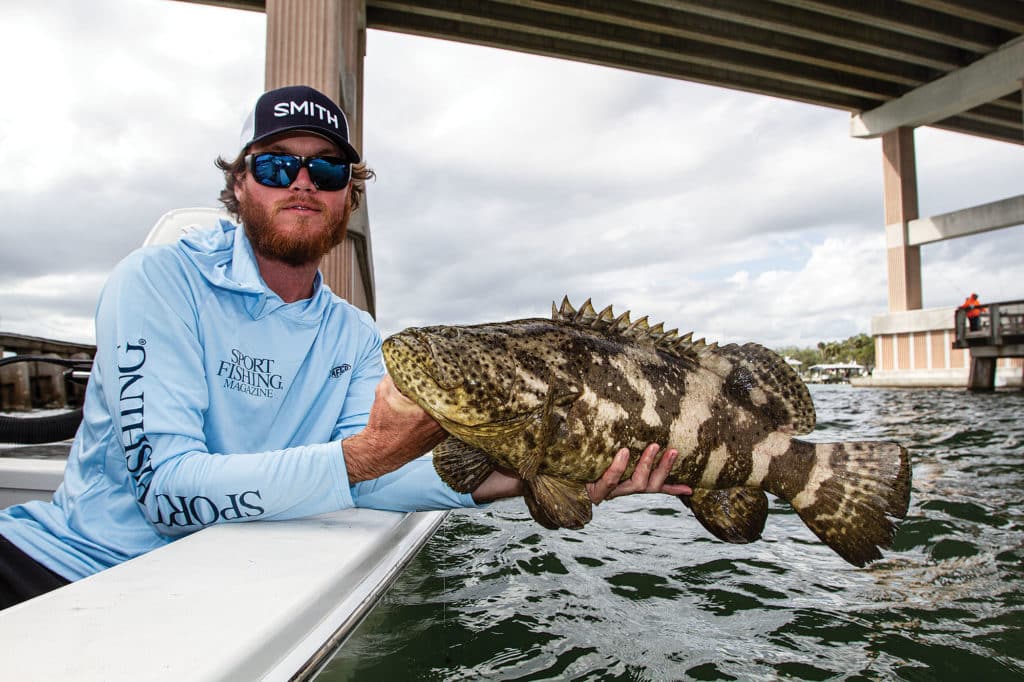
“Controlling the fish after you have him on is a pretty big thing,” says Williams, who uses 7- and 8-foot heavy and medium-heavy rods with Abu Garcia 5500 levelwind baitcasting reels spooled with 30- to 40-pound Izorline braid.
He runs the braid through a plastic bead, then the float and ties it to a 1½-ounce trout sinker (a small cigar sinker with rings at both ends). The other end of the lead is tied to a 12- to 15-inch piece of 40-, 50-, or 60-pound monofilament leader affixed to a kahle hook, ranging in size from No. 2 for a small shrimp for trout to 4/0 for an 8-inch mullet to target stripers.
Read Next: Bridge Fishing Tips
To adjust the depth of the slip float, Williams uses a piece of fly line backing to tie a uni-knot on the braided line. He can slide the stopper knot to get the bait deeper or shallower.
“I start at 6 feet under the water and go down in 3- or 4-foot increments on every drift,” he says. Once he locates the fish, unlike the boaters cruising past him, he’s happy to sit at the bridge as long as the fish are there.

